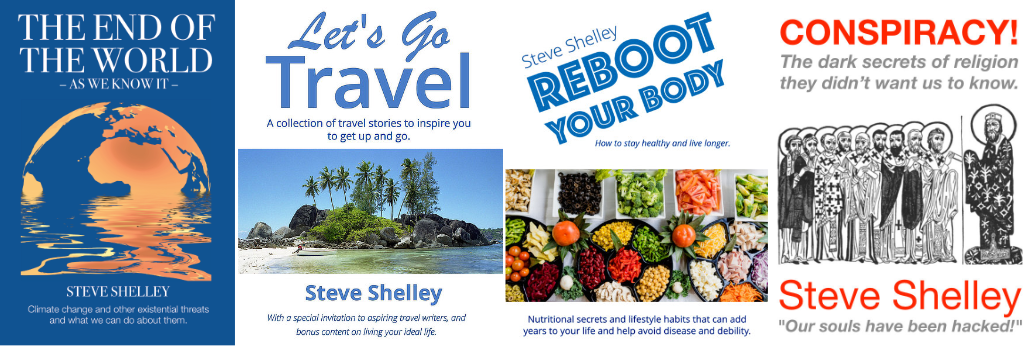There’s never been a better time to be a writer and independent publisher. And since the government has confined us to home, there is no longer any reason to delay. As we seek ever more creative ways to gainfully fill our lockdown time, make a decision to get to work on your book. The upside is that you establish yourself ever more credibly in your chosen field. There isn’t any downside: if you’re unsure where to start, if you don’t know how to proceed, or if you feel daunted by the entire proposition, then simply call for help. Writing and self-publishing lends itself readily to a coaching support programme. And as you can see from my bookshelf above, I’ve done it many times.
Where to start: What do you want to write about? What do you know? What do you feel passionate about? What do you want to tell people? What gaps can you see in what people want to read about? That provides your subject and perhaps a working title. Who is your target readership? Can you characterise them in a way that helps you write directly to them? And finally why are you doing this? Few writers make much money from their books, but becoming a published author confers great credibility as an expert in your field.
Outlining: The secret starting point is to dump your thoughts onto paper – or screen – in any order. Key words and phrases as they occur to you. You will find that headings start to pop out. These become your chapter titles. Slowly let them sort themselves into a structure. It will probably change but it’s a great way to start. Give each emerging chapter its own brain dump. What do you want to cover? What points will you make? Gradually, as you add text to the skeleton of the outline it will flesh out into your book.
Practical tips: You will have a lot of questions but here are some answers to the most common. How long should your book be? A short informative e-book may be as short as 30 pages with a lot of space and graphics, which means you can get away with less than 20,000 words. A 100 page non-fiction book will be around 30-40,000 words. A decent sized novel or hefty non-fiction could run to 400 pages, or in excess of 120,000 words. How much time do you need to allocate? It’s a balance between time input and overall elapsed time to completion. I’d recommend a minimum of 3-4 hours a day, and aim for 2-3 months to get it done.
Outsourcing: Producing your book takes a lot more than just writing. Think of the finished book as a work of art, or a product, which needs a range of skilled inputs. You’ll need to design a suitable page layout with fonts, spacing and margins. You’ll need an eye-catching cover. You’ll need a few paragraphs of ‘blurb’ which describes the book and why people should read it. And you will need multiple rounds of edits to ensure a coherent flow, consistent style, accurate grammar and spelling. Many authors choose to hire in experts for these tasks.
Self-publishing: Time was when you would need an agent and a publisher. Each would take a cut, leaving you with a meagre 10% of net sales at best. And they would expect you to do the marketing. Now there are many options to publish yourself through Amazon and/or other outlets. This way you control every aspect of the process and retain up to 70% of sales income.
Distribution: You will need to decide whether you want to make money from sales or if you plan to use your book as a promotional device to sell other services. WIll you produce an e-book that can be read on any device? Or do you need a supply of printed paperbacks? You can get a printer to deliver a few hundred copies to you. Or you can rely on Amazon (or others) to send out Print On Demand (POD) copies. Perhaps surprisingly, it’s hard to beat Amazon’s POD cost unless you want to include colour images in your book.
How may I help you?
I’ve been writing (and teaching writing) for a long time. My first book was published by Macmillan in 1989. But like many authors, my more recent books have been self-published. Please get in touch if you’d like to know more: ss@steveshelley.org 0754 888 5576.
